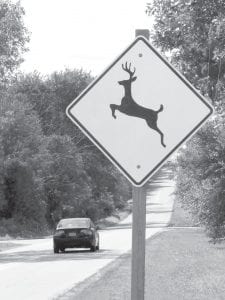“Don’t veer for deer” is the message to Minnesota motorists as the state’s deer population becomes more active during mating season—at a time when deer-vehicle crashes historically spike.
The Minnesota Department of Public Safety (DPS) and the Department of Natural Resources (DNR) urge motorists to drive at safe speeds and pay attention. Deer movement peaks after sundown and before sunrise.
In Minnesota during the last three years, 2007–2009, there were 8,325 deer–vehicle crashes — 1,845 in November — resulting in 19 deaths of which 16 were motorcyclists. The crashes also resulted in 65 serious injuries of which 55 were motorcyclists.
“Deer can be a major hazard on the road, but serious injuries or death can be prevented if motorists don’t swerve to avoid a deer,” says Captain Matt Langer of the Minnesota State Patrol. “Swerving to avoid a deer or any other animal can result in your vehicle going off the road or into oncoming traffic. The best defense is to be buckled and brake.”
DPS motorcycle safety experts say motorcyclists should ride only during daylight hours and avoid roads and areas that are likely to have high deer activity. Officials say a rider’s best response when encountering a deer is to slow down quickly and then drive carefully around the animal at low speed. Riders are encouraged to wear helmets and other high-visibility protective gear to prevent injury or death in a crash.
If a deer is struck by a vehicle, but not killed, people should keep at a distance because some deer may recover and move on. However, if a deer does not move on, or poses a public safety risk, people are encouraged to report the incident to a DNR conservation officer or other local law enforcement agency.



Loading Comments